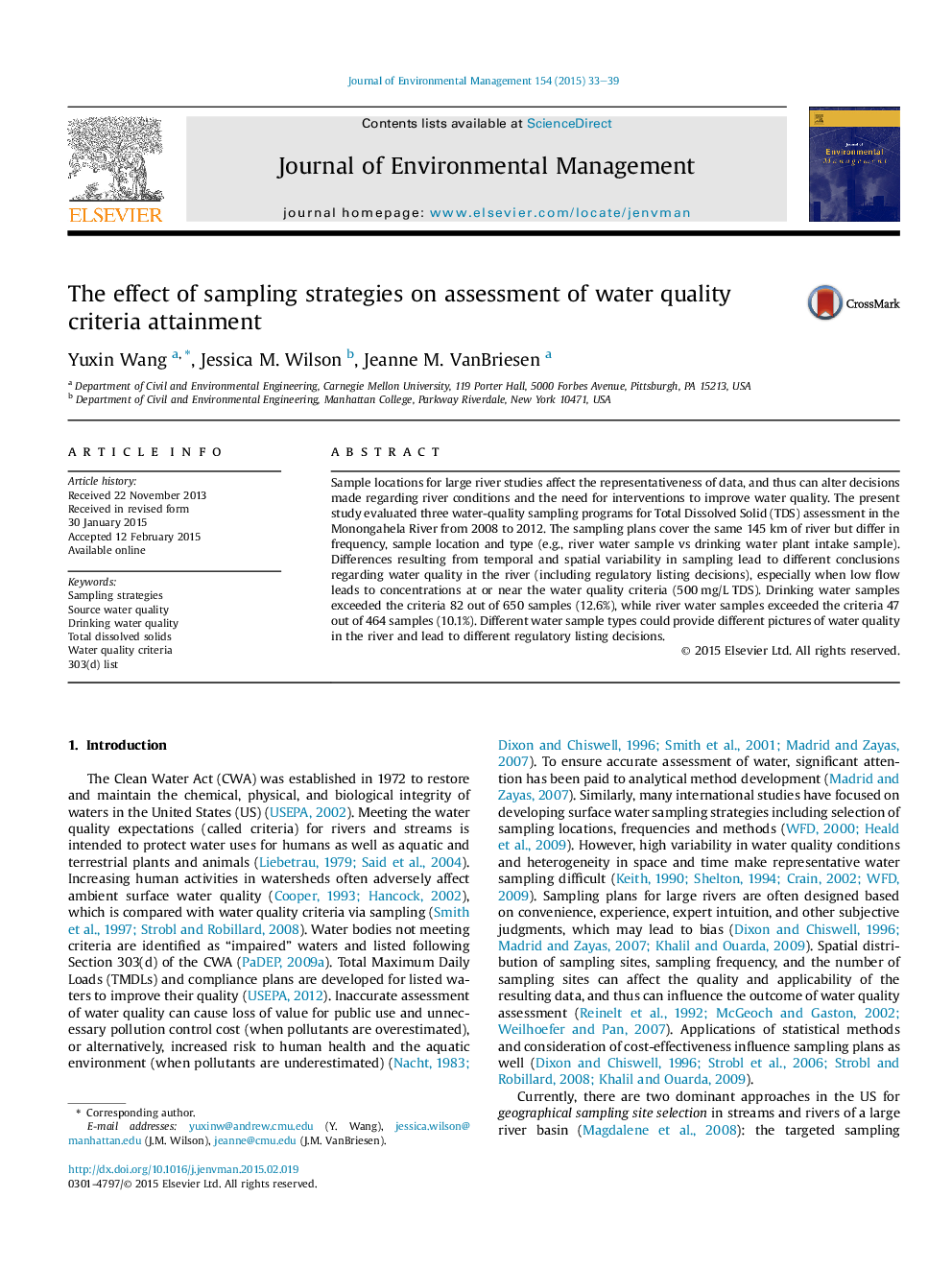| Article ID | Journal | Published Year | Pages | File Type |
|---|---|---|---|---|
| 7482357 | Journal of Environmental Management | 2015 | 7 Pages |
Abstract
Sample locations for large river studies affect the representativeness of data, and thus can alter decisions made regarding river conditions and the need for interventions to improve water quality. The present study evaluated three water-quality sampling programs for Total Dissolved Solid (TDS) assessment in the Monongahela River from 2008 to 2012. The sampling plans cover the same 145Â km of river but differ in frequency, sample location and type (e.g., river water sample vs drinking water plant intake sample). Differences resulting from temporal and spatial variability in sampling lead to different conclusions regarding water quality in the river (including regulatory listing decisions), especially when low flow leads to concentrations at or near the water quality criteria (500Â mg/L TDS). Drinking water samples exceeded the criteria 82 out of 650 samples (12.6%), while river water samples exceeded the criteria 47 out of 464 samples (10.1%). Different water sample types could provide different pictures of water quality in the river and lead to different regulatory listing decisions.
Related Topics
Physical Sciences and Engineering
Energy
Renewable Energy, Sustainability and the Environment
Authors
Yuxin Wang, Jessica M. Wilson, Jeanne M. VanBriesen,
